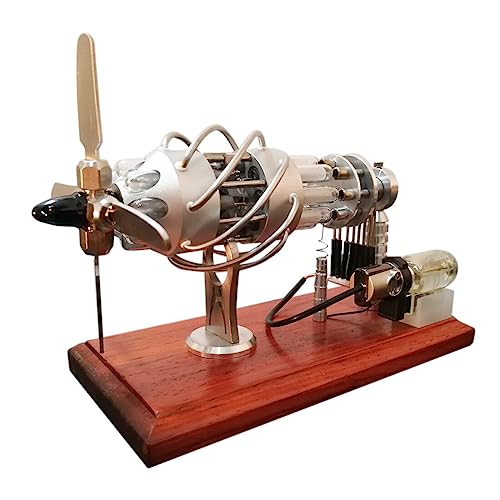nealeb
Well-Known Member
To clear up any misunderstanding - my problem was silver-soldering a machined phosphor-bronze component to another brass component. I just could not get the SS to flow on to the bronze. I wasn't using phosphorus-bearing rods - as you say, a different kettle of fish.
The problem with learning from someone else's experience comes when two different groups of people have such different experiences! Should I listen to someone who says "no way - doesn't work" or someone who says "don't know what they're complaining about - works fine for me." On the non-cadmium-bearing issue, there are enough people who say it works that I'm inclined to believe them - and my only small-scale boiler work to date bears that out. I can't believe that a large boiler will be using some magically different kind of copper, so except for, maybe, heating requirements it's not obvious to me why my experience to date won't scale.
There seems to be a whole bunch of beliefs around silver-soldering that, in my experience, just don't seem to be true. Like, must degrease surfaces and avoid touching them with your hands thereafter. Nope, not true for me - I might give parts a quick wipe over with kitchen paper if they are particularly grubby but the brass I was working with a couple of days ago didn't even get that - after handling, I assembled the two pieces together, fluxed, heated, and the SS flowed beautifully into the joint. Similarly, read the model engineering magazines from many years back and the recommendation seemed to be "ream the holes accurately to fit the tubes, file three or four nicks around the edge to let the SS flow through." Well, maybe, but the more modern recommendation of aiming for a 3-4 thou gap all round (which does, to be fair, mean that you need to look at clamping arrangements to keep everything in place) gives perfect joints. Well, it does for me using non-Cd silver-solder!
I personally do not know any professional boiler-makers but I don't think that any of them in the UK will be using Cd-bearing SS. Now, their heating capabilities might be different - more likely to see oxy-propane or oxy-acetylene (as per Alec Farmer's classic book from many years ago) - but I see that as a learning opportunity. What I just don't know - yet, and it's not that easy to find out - is how much heat is going to be required for my "big" boiler. I've read some useful info in this thread so far re protective clothing and that's something that I have not really needed with my smaller projects to date. A good chance to learn from other's experience!
The problem with learning from someone else's experience comes when two different groups of people have such different experiences! Should I listen to someone who says "no way - doesn't work" or someone who says "don't know what they're complaining about - works fine for me." On the non-cadmium-bearing issue, there are enough people who say it works that I'm inclined to believe them - and my only small-scale boiler work to date bears that out. I can't believe that a large boiler will be using some magically different kind of copper, so except for, maybe, heating requirements it's not obvious to me why my experience to date won't scale.
There seems to be a whole bunch of beliefs around silver-soldering that, in my experience, just don't seem to be true. Like, must degrease surfaces and avoid touching them with your hands thereafter. Nope, not true for me - I might give parts a quick wipe over with kitchen paper if they are particularly grubby but the brass I was working with a couple of days ago didn't even get that - after handling, I assembled the two pieces together, fluxed, heated, and the SS flowed beautifully into the joint. Similarly, read the model engineering magazines from many years back and the recommendation seemed to be "ream the holes accurately to fit the tubes, file three or four nicks around the edge to let the SS flow through." Well, maybe, but the more modern recommendation of aiming for a 3-4 thou gap all round (which does, to be fair, mean that you need to look at clamping arrangements to keep everything in place) gives perfect joints. Well, it does for me using non-Cd silver-solder!
I personally do not know any professional boiler-makers but I don't think that any of them in the UK will be using Cd-bearing SS. Now, their heating capabilities might be different - more likely to see oxy-propane or oxy-acetylene (as per Alec Farmer's classic book from many years ago) - but I see that as a learning opportunity. What I just don't know - yet, and it's not that easy to find out - is how much heat is going to be required for my "big" boiler. I've read some useful info in this thread so far re protective clothing and that's something that I have not really needed with my smaller projects to date. A good chance to learn from other's experience!






![Learning Revit MEP 2014 [Online Code]](https://m.media-amazon.com/images/I/61vjG-sEuQL._SL500_.jpg)
























![Learning AutoCAD Electrical 2014 [Online Code]](https://m.media-amazon.com/images/I/61KCPiYWuEL._SL500_.jpg)





![Learning Rhino 5 [Online Code]](https://m.media-amazon.com/images/I/51mnp7gNY7L._SL500_.jpg)


















![Learning AutoCAD Civil 3D 2014 [Online Code]](https://m.media-amazon.com/images/I/51F3yi9fokL._SL500_.jpg)





![DreamPlan Home Design and Landscaping Software Free for Windows [PC Download]](https://m.media-amazon.com/images/I/51kvZH2dVLL._SL500_.jpg)






